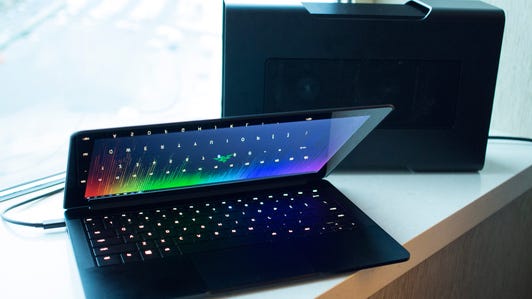The Razer Blade Stealth was a major head turner for those who attended CES 2016, but a head-scratcher for Australian gamers, who were left without a release date for the gorgeous-looking machine.
Clearing things up on Monday, Razer CEO Min-Liang Tan said that the Blade Stealth would launch throughout the Asia Pacific in the next two months.
“We are overwhelmed with demand for the Stealth at the moment but we are confident that we can bring it to Asia Pacific and Australia by the end of March or early April,” he said.
More from Razer
- The Razer Blade Stealth looks like the laptop we’ve been dreaming of
- Razer Nabu Watch keeps on ticking, long after the smarts are gone
- Razer Blade 2015: A gaming laptop in a class by itself
Announced at CES 2016, the Blade Stealth is an Ultrabook that, when plugged into Razer’s Core external graphics docking station, can double as a gaming laptop. Tan said that the Core, which can hold any recent desktop-grade graphics card, would launch by the end of June.
Over in the the US, the line starts out at $999, which converts roughly to AU$1,400, and tops out at $1,599, or around AU$2,250. The exec says that no pricing for Australia has been finalised, but explained that customers “are able to save around 25 percent because we sell through online channels and don’t have to go through a middleman.”
The Blade Stealth has a lot going for it, starting with its incredibly light 1.2kg (2.75 pound) unibody aluminium frame. The design aesthetics that made previous Razer laptops like the Blade 14 such sexy pieces of tech are present here, with the Blade Stealth reprising the black and green colour scheme and offering individually-backlit keys.
Check out the Razer Blade Stealth and Core (pictures)






Performance-wise, Razer’s Ultrabook is no slouch. It packs a Core i7 processor, 8GB of RAM and solid-state storage into its lithe frame. The base unit comes with a 2,560×1,440-pixel resolution 12.5-inch touchscreen and 128GB of storage, with higher spec versions packing a 4K 3,840 pixels×2,160-display and up to 512GB of storage.




